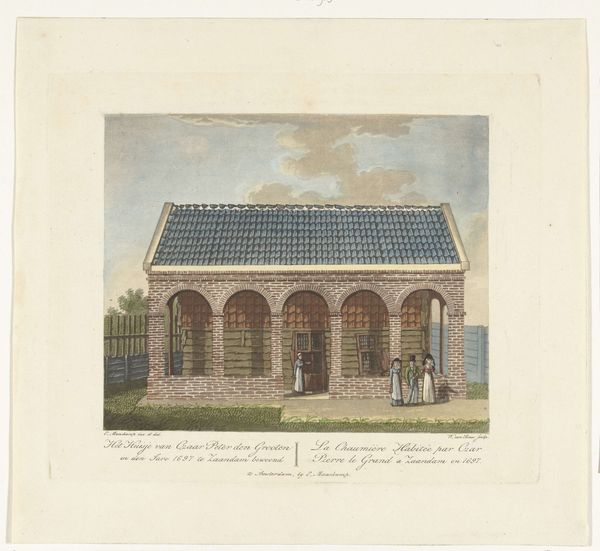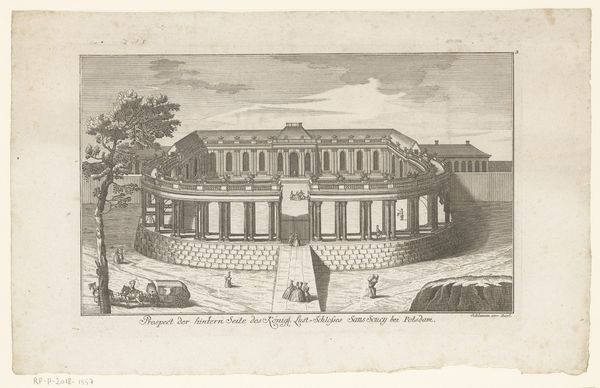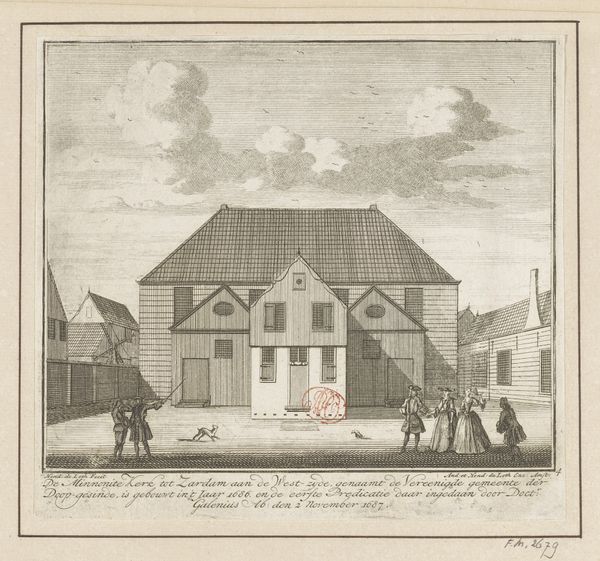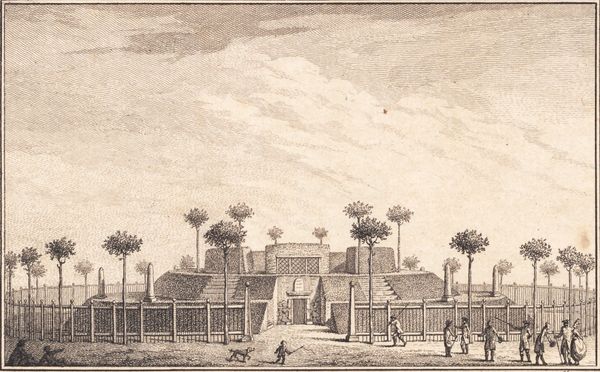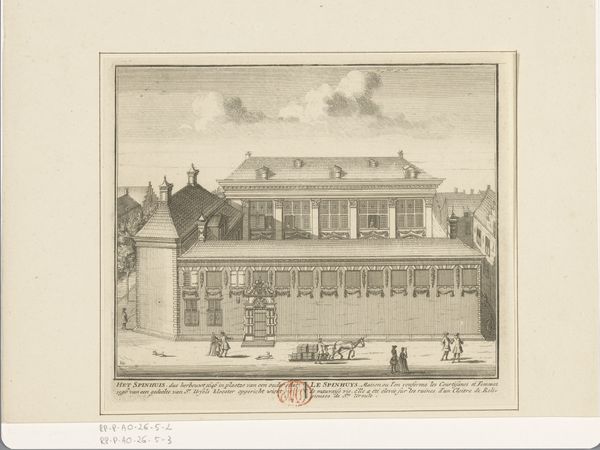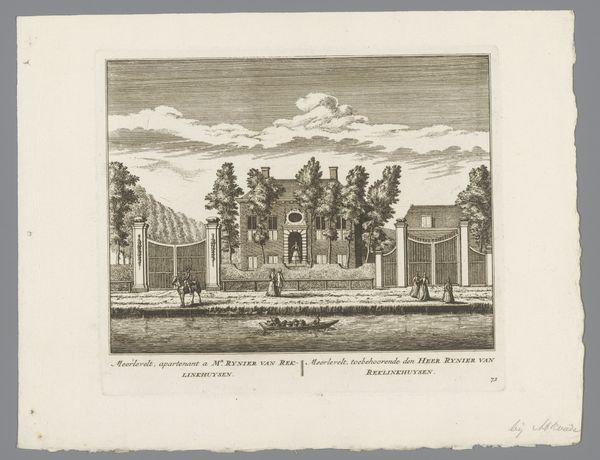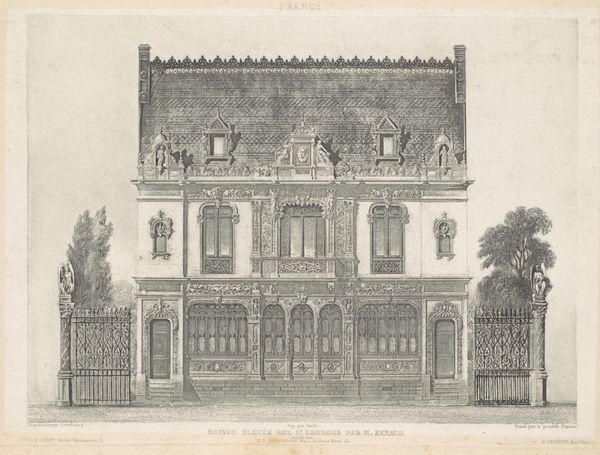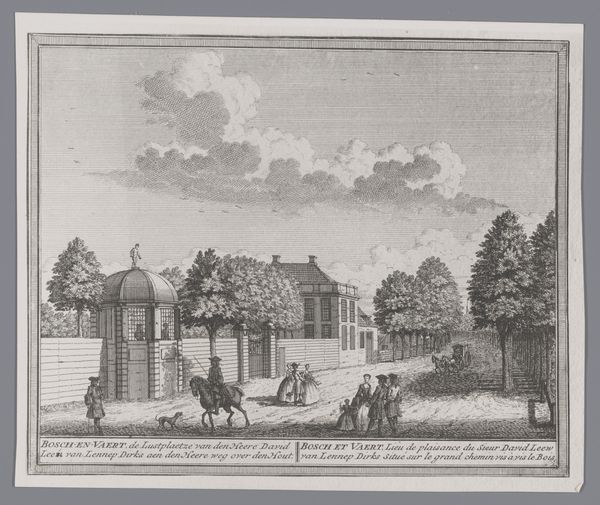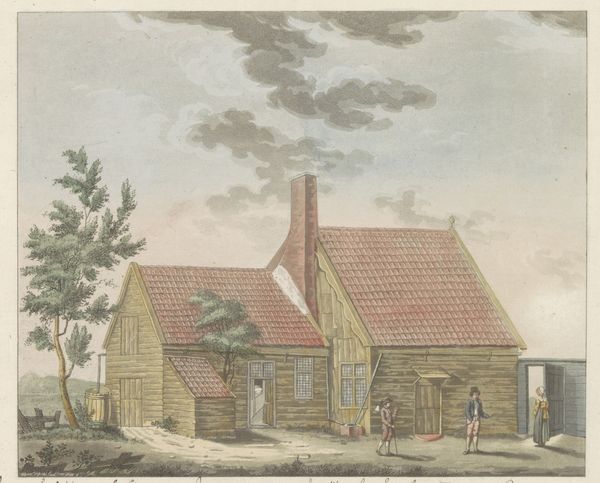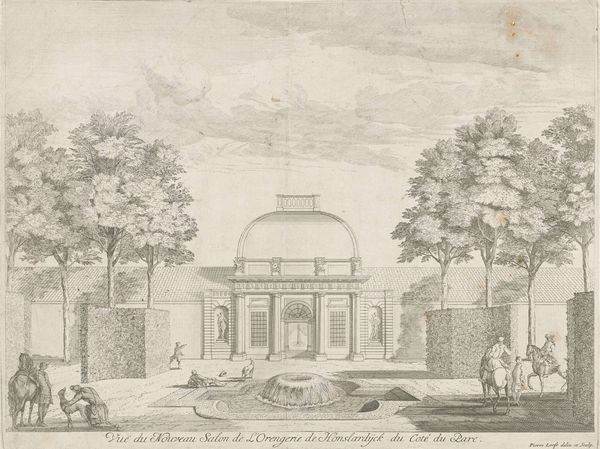
coloured-pencil, painting, watercolor
#
coloured-pencil
#
dutch-golden-age
#
painting
#
landscape
#
watercolor
#
coloured pencil
#
cityscape
#
watercolour illustration
#
genre-painting
#
realism
Dimensions: height 192 mm, width 228 mm
Copyright: Rijks Museum: Open Domain
Curator: The work before us is entitled "Tsaar Peterhuisje te Zaandam, 1824," made with watercolor and colored pencil on paper by Willem van Senus in the 1820s. It resides here in the Rijksmuseum. Editor: My initial thought is of its unassuming presence. It’s modest, yet there's an odd kind of stillness and strength radiating from it. The repeated arch motif feels significant, framing darker interiors and suggesting hidden stories. Curator: Indeed. This unassuming structure held significant historical weight, particularly during a period of burgeoning Dutch nationalism. The Peterhuisje, as it’s known, represents a direct link to Tsar Peter the Great's time spent in Zaandam, Netherlands, learning shipbuilding skills. Editor: That context certainly deepens the image. The presence of the figures gives us a sense of scale, but I'm drawn to the stark contrast between the bright brick and roof tiles and the dark, almost secretive interior spaces visible through the arches. There’s a visual duality at play. Curator: Van Senus likely employed realism as a visual rhetoric, an attempt to make Peter’s story both accessible and monumental. The work commemorates the Tsar’s stay as a defining moment, a kind of cultural artifact worth preserving through depiction. Editor: Consider also the iconographic implications of water. It evokes journeys, transformations, but it is also a cleansing experience, a means by which Peter gains mastery, even as a noble pretending to be a craftsman, while contributing greatly to his cultural persona. Curator: You’ve pointed to an interesting paradox. Peter sought practical knowledge, yet the narrative around his visit quickly morphed into a legendary episode, subtly reinforcing existing social hierarchies, with royalty slumming among the working classes as it were. It shows how easily revolutionary ideals could be co-opted. Editor: So it becomes about both history and legend simultaneously—the Tsar’s visit becomes an established visual language speaking to authority and progress. Its apparent modesty only amplifies its cultural impact in this rendering. Curator: I agree. The Peterhuisje functions less as a historical document and more as an architectural allegory, speaking volumes about power, perception, and how societies construct narratives to serve current needs. Editor: An intimate portrayal steeped in national and iconic symbolism. It’s changed how I interpret the building. Thanks for sharing.
Comments
No comments
Be the first to comment and join the conversation on the ultimate creative platform.
